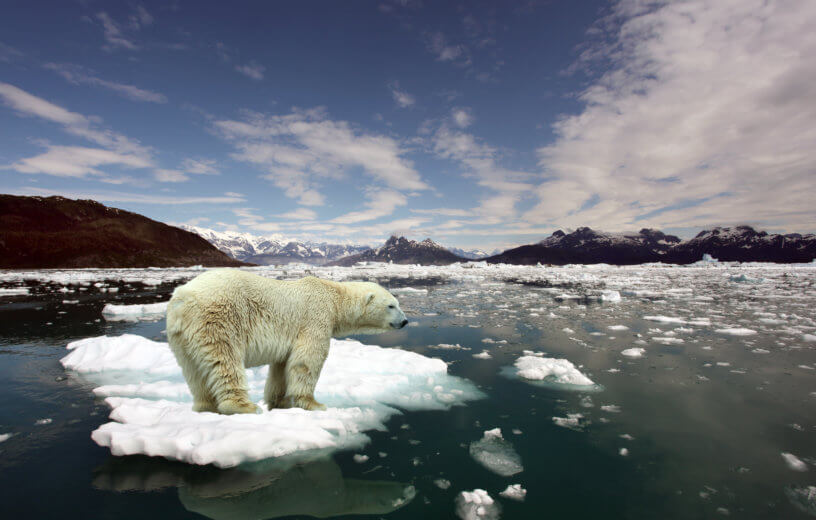LOS ALAMOS, N.M. — A chilling new study reveals temperatures in the Arctic are increasing four times faster than the current rate of global warming. Researchers say an analysis of observed temperatures found two jumps that most climate models missed over the past 50 years.
“Thirty years is considered the minimum to represent climate change,” says study lead author Petr Chylek, a physicist and climate researcher at Los Alamos National Laboratory, in a media release. “We decreased the time interval to 21 years. At that smaller time scale and, contrary to previous investigations that found the Arctic amplification index increases in a smooth way, we observed two distinct steps, one in 1986 and a second one in 1999.”
The amplification index used in this study is the ratio of an Arctic 21-year temperature trend versus an overall global 21-year temperature trend.
Researchers found the Arctic amplification index to be greater than four (4) over the early decades of the 21st century, meaning four times faster than the global mean and much more rapid than previous research had determined using 30 to 40-year time intervals. Previous studies calculated that the index was closer to two (2) or three (3).
Of the 39 climate-change models used in the CMIP6 collection of the Coupled Model Intercomparison Project, researchers revealed four that reproduced the first step reasonably well around 1986, but none that reproduced the second step in 1999.
“We attributed the first step to increasing concentrations of carbon dioxide and other pollutants in the atmosphere, because several models do it correctly,” notes Chylek, “but the second step, we think, is due to climate variability because none of the models can reproduce the second step.”
What’s causing temperatures to skyrocket?
Scientists say short-term climate variability is not usually detectable by climate models with their 30-year-long timescales.
Although the team did not find a cause for these sudden increases, researchers believe that contributing factors include sea ice and water vapor feedbacks, combined with changes in how atmospheric and oceanic heat moves into the Arctic.
“Future increases in the Arctic amplification index are likely to be smaller as the temperature difference between the Arctic and the tropics decreases,” researchers add.
The team is using the four models that came closest to matching the observed warming trend for future Arctic climate projections.
“Because the four models correctly reproduce at least the first step, we assume they’re a little better for future climate projection,” explains Chylek. “People usually average all models and assume the ensemble is more reliable than any single model. We show the average does not work in this case.”
Study authors downloaded temperature data from the Arctic and used simulations output from climate models in the CMIP6 collection.
“People are not only interested in long-term climate change, but they are also interested in 10 years ahead, 20 years, 30 years. For decadal prediction, our observation that the amplification index changed in the past in steps is quite important,” says Chylek.
The findings appear in the journal Geophysical Research Letters.

